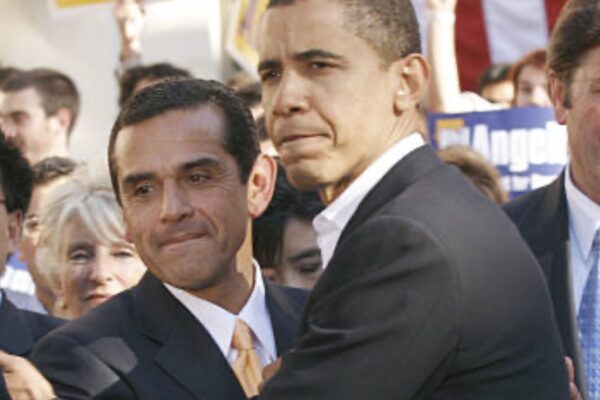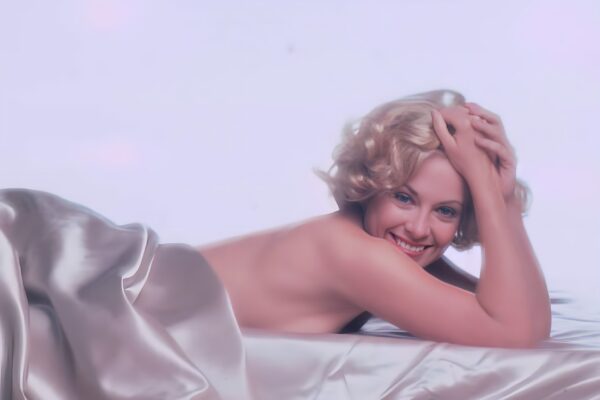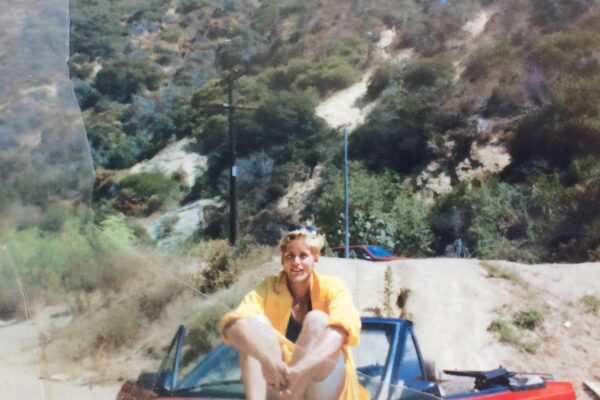Joe Louis, W.E.B. Du Bois, Thurgood Marshall and Much More
See that house across the street? It may not look so fancy, but it may turn out that the people who built that also built the hotel down the block, or they named the local school after the lady of the house or named the street after the man of the house.
The modest Craftsman-style house at 1045 E. 42nd Place doesn’t look like much from the outside, but the place holds a lot of significance in Los Angeles history.
“We are standing on these people’s shoulders,” says Brother London Carter, pointing to the house, and then to the block-long mural across the street. “Everybody came to Central. Everybody in Black America came down this street.”
Brother London is a sort-of ambassador/historian of the Dunbar Hotel in an area just south of Downtown LA. It’s only a dozen miles from the Hollywood Roosevelt Hotel where the first Academy Awards were held. But it might as well have been a world away.

People of color weren’t allowed to attend those ceremonies, and after sundown you didn’t want to be seen outside in Hollywood if you weren’t white. So the people of color found themselves in the posh Dunbar Hotel in Central. And, that house around the corner from the hotel is the home of the builders of this African American mecca, Drs. John and Vada Somerville; civil rights activists and the first and second African Americans to graduate from the USC School of Dentistry in 1907 and 1918 respectively.
Brother London gives tours and tells the stories of the Dunbar Hotel, and if he’s particularly fond of you he will take you up to his fifth-floor apartment where you can get the best shot of the iconic Dunbar Hotel sign right out his living room window.
Not only was this hotel the center of rip-roaring clubs of the 1920s, but it’s where Joe Louis the “Brown Bomber” reigned as world heavyweight fighter; it’s where W.E.B. Du Bois held meetings against Jim Crow laws and discrimination against African and Asians; and it’s where the first black justice on the Supreme Court Thurgood Marshall had to stay when he came to Los Angeles because of the whites-only policies of Hollywood hotels.
More recently it’s where Rev. Jesse Jackson held meetings with beating victim Rodney King in the aftermath of the L.A. Riots.
Photos of all these famous folk line the lobby of the Dunbar. There’s Billie Holiday singing at the hotel club run by former heavyweight champ Jack Johnson. That huge photo in the Delicious Soul Food Restaurant is of Lena Horne. Look around, walk the tiled floors, and you’ll feel the spirits of Sarah Vaughn, Cab Calloway, Louis Armstrong, Ella Fitzgerald, Count Basie and more.
Writer Langston Hughes, blues diva Bessie Smith, actor Herb Jeffries and other black luminaries schmoozed and created history inside these very walls, which also served as the national headquarters for the NAACP for a time.
On the mural across from the hotel is an explanatory guide giving history of the famous black faces depicted in the mural, including L.A.’s first black Mayor Tom Bradley, the first black man to win the Nobel Prize Ralph Bunche and band leader Duke Ellington.
“Can you imagine what it was like with all those people visiting here?” Brother London gushes. “It’s like nowhere else in the world.”
Most of the thriving nightclubs around 4225 S. Central are long gone, and the Dunbar fell into disrepair and closed up for a decade in the 1960s. A group of preservationists restored the fountain, the tiles and courtyard and created 83 apartments for seniors.
The Dunbar became a hostel for members of the Peace Mission Movement in the 1930s, and then became the place to get a hot ticket to a nightclub act through the 1950s where you’d find Fats Waller, Bill “Bojangles” Robinson, singer Mae Johnson and the like.
The hotel became a historic monument and reopened as a place for senior and low-income housing.
“It may not be as jumping as it used to be, but neither am I,” quipped Brother London, who is known as the Mayor of the Dunbar. “But it’s still here, and so am I.”
You can reach Brother London for a private tour of the Dunbar Hotel at 310-658-9281.
You can reach Mike at mikeszy@aol.com.
Photo 1
Dunbar Lobby.jpg
caption
Here’s the lobby of the Dunbar Hotel where resident historian Brother London gives tours and tells the stories of famous guests whose photos line walls.
Photo by Mike Szy





